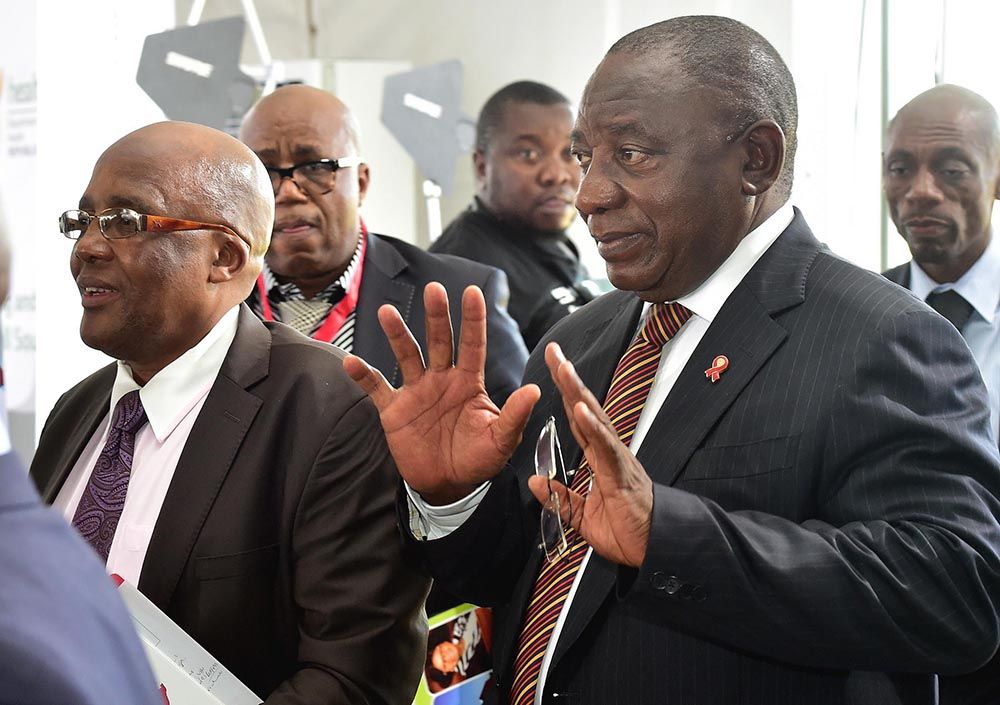
South African Rand Risks Fresh Depreciation Despite SONA's Positives
by James Skinner- ZAR buoyant amid risk asset rally ahead of the weekend.
- But fresh losses tipped ahead of budget at month-end.
- Ramaphosa offers hope on fiscal and energy challenges.
- But financial markets want action and results, not words.
- ING warns of move to USD/ZAR move to 16.0 post-budget.
- Says coronavirus to put a cap on ZAR, delay any recovery.
- Sucden Financial sees USD/ZAR higher, cites bearish charts.
- GBP/ZAR Spot Rate: 19.35, down 0.83% today
- Indicative bank rates for transfers: 18.66-18.80
- Indicative broker rates for transfers: 19.05-19.16 >> find out more about this rate.
The Rand gained on the Pound and Dollar Friday but some analysts are warning of a renewed depreciation over the coming weeks as the annual budget draws closer amid a fragile international backdrop.
South Africa's Rand rose alongside commodity prices and stock markets on Friday, pushing both the Pound-to-Rand and USD/ZAR rates down by close to half a percent as markets remained sanguine about the coronavirus.
Price action follows President Cyril Ramaphosa's state-of-the-nation address in which he noted the headwinds facing households and companies before pledging action on a number of South Africa's greatest challenges.
"The president hit all the right notes in his annual song to the people of South Africa, but many will want to see action before buying into the promises - there has been so much promised before, and delivery is where the government has continually fallen short," says Siobhan Redford at Rand Merchant Bank.
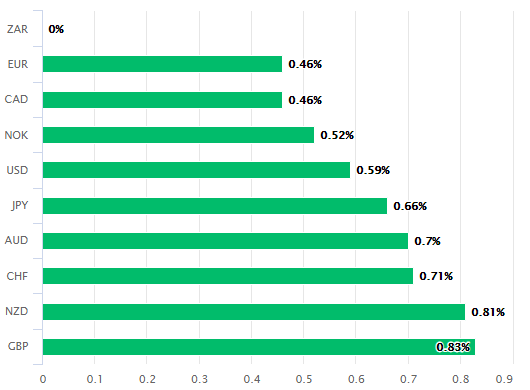
The speech was made to parliament and the country just weeks away from the February 26 budget statement and barely more than a month ahead of the next credit rating decision of Moody's, which is key to the outlook for the Rand.
Ramaphosa committed Thursday to further advance 'Renewable Energy Independent Power Projects' (REIPP) that have the potential to eliminate a meaningful part of the nation's energy deficit over the next five years. REIPPs see the government partner with private enterprises in agreeing to buy on behalf of the grid, renewable energy that is generated by third party projects.
"The first nine months of FY2019/20 suggest that the trailing budget deficit is underperforming the MTBPS forecast of 6.2% of GDP by about R15bn (0.3% of GDP). This is mainly due to weak economic activity and downside surprises to inflation weighing on revenues," says Ferhan Salman, a senior economist at BofA Global Research in a Tuesday note to clients.
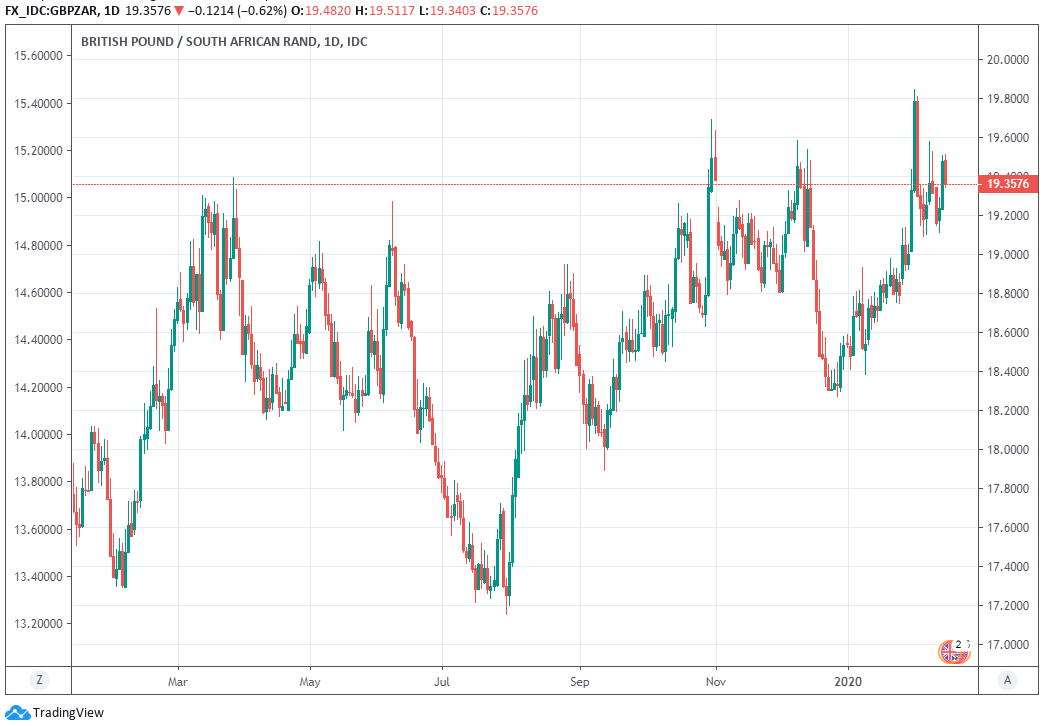
Ramaphosa said the government will begin procurement processes for projects that can provide power to the grid within the next three-to-twelve months.
He also announced the fifth of seven "bid windows" in a broader process that the government sees producing more than 6,000MW of new electricity generation capacity in the coming years.
That's enough to neutralise some risks posed by Eskom, where a 6,000MW loss of power would ordinarily lead to 'stage six load-shedding,' the most severe form of self-imposed, rolling blackouts seen so far. Such load-shedding can cause immediate and severe problems for the economy.
Ramphosa also didn't rule out a Congress of South African Trade Unions (COSATU) plan to use Public Investment Corporation (PIC) funds to restructure the Eskom balance sheet, which is the greatest threat to the public purse, credit rating and currency. COSATU has a long list of demands that it wants to impose on any restructuring process and after tabling its plan in December, the various parties are still in talks with each other.
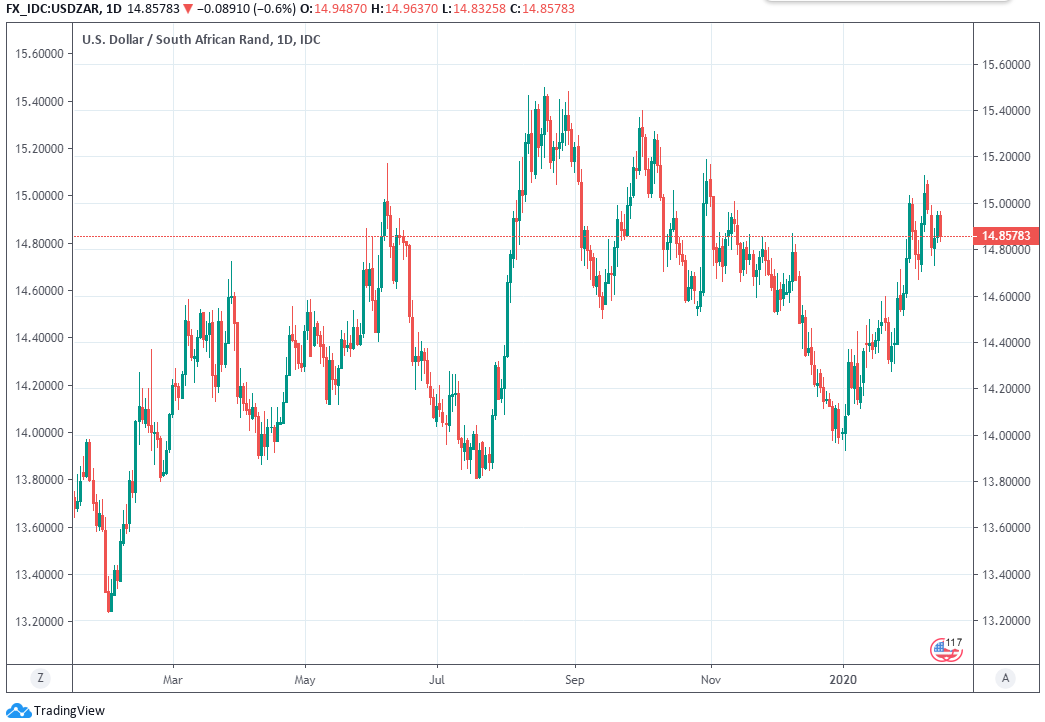
"Potential funding from the public investment corporation (PIC) would lift part of the burden on the sovereign in the short-term but does not preclude the need for medium-term restructuring of [Eskom]," BofA's Salman says. "We think Moody's is likely to delay its decision 4Q20 to gain time to assess the impact of these developments. However, more is required, e.g. 1% VAT hike, to engineer a decline in the debt-to-GDP ratio."
COSATU wants PIC to take ownership of nearly half the R450bn of Eskom debt that's currently guaranteed by the government and to convert at least some of it into equity, which would substantially address one of the major concerns of Moody's, the last major agency to still rate South Africa an 'investment grade' credit prospect. Moody's cut the outlook for its rating from stable to negative in November, indicating that a downgrade to 'junk' could be on the horizon.
Losing the top credit rating would mean South African government debt can no longer be held by fund managers who're limited by mandate to investments in only 'investment grade' securities. At least some of those may already have sold their government bonds in anticipation of a March 27 downgrade but so-called 'passive investors' who simply mimic investment grade benchmarks will not yet have sold theirs, which is a risk to the Rand.
"Weak economic growth along with power outages in South Africa could continue to add pressures on ZAR," says Geordie Wilkes, head of research at Sucden Financial. "USDZAR has remained on trend in recent months, dips have been bought. The stochastics are improving and the MACD diff is negative but has converged. Near term momentum is on the upside but the pair needs to break long term trend resistance at 15.10."
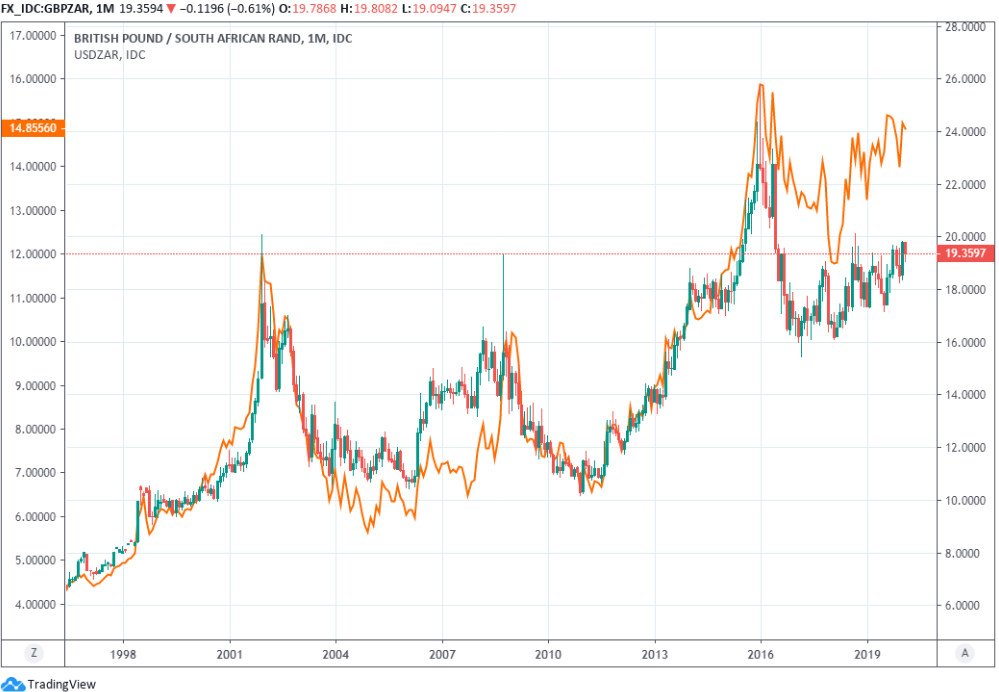
The Rand has spent years trading near to record lows against the Dollar and Pound due to ongoing concerns over a long-term decline in the country's growth rate as well as deterioration in the state of the public purse, not to mention a litany of other fiscal and governance challenges. And with the October medium-term budget having gone down poorly in the market, the risk is that February's spending plan again ruffles the Rand's feathers.
However, the South African currency is also now facing fresh international risks in addition to the domestic, given uncertainty about whether China really has got control of the coronavirus infection spreading there.
The outbreak is expected to drive a sharp if-not unprecedented contraction in Chinese GDP for at least the first quarter of the current year, which is bad news for the Rand because China is South Africa's largest trading partner and the source of a profitable trade surplus that's now at risk.
"The Rand has been hit the most since the coronavirus started to weigh on equity markets around 21 January. Poorly positioned in terms of a large commodity export-to-GDP ratio and also a correlation with risk assets, recall that the ZAR was also the high beta sell during the Renminbi sell-off last summer," says Chris Turner, head of FX strategy at ING. "The ZAR also faces a domestic risk in terms of a crucial budget on 26 February and a possible sovereign downgrade to junk by Moody’s on 27 March, which if seen could push $/ZAR closer to 16 as passive funds quite investment grade benchmark indices."